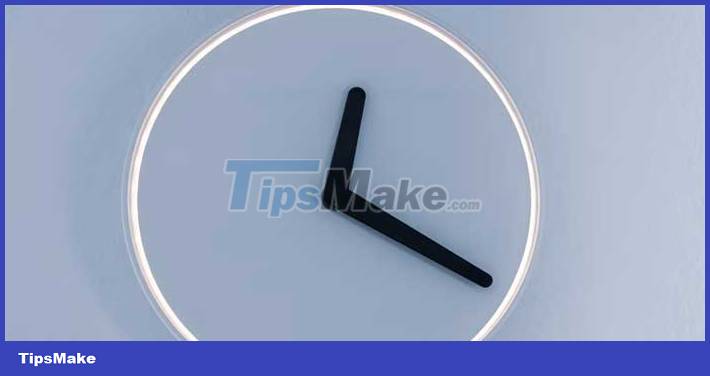How to manage date and time in React using Moment.js

Managing date & time in React can be a challenge for beginners. Fortunately, there are several libraries that help you manage dates and times in React. One of them is Moment.js.
Moment.js is a lightweight library that provides a simple solution for manipulating and formatting dates & times in JavaScript.
Install the Moment.js . library
The Moment.js library is a package that manages date & time operations in JavaScript. Installing the Moment.js library is the first step to using it in a React app. You can do this by running the following command in the terminal.
npm install momentOnce the installation is complete, you can use Moment.js in React elements.
Use Moment.js to display date and time
You can use Moment.js to display dates and times in a specific format in your React app. To use this library, import moment from the installed package.
import React from 'react'; import moment from 'moment'; function App() { const date = moment().format("MMMM DD YYYY"); const time = moment().format("HH mm ss"); return ( Today's date is { date }
The time is { time }
) } export default AppThe moment() method creates a new moment object, representing a specific point in time. The format() method formats a moment object as a string.
The format() method takes a string argument that specifies the desired format for the moment object. String arguments can include a combination of letters and special characters. Each character has its own meaning.
Examples of some special characters:
- YYYY: Four-digit year
- YY: Two-digit year
- MM: Two-digit month
- M: One- or two-digit month
- MMMM: Month in words
- DD: Day of the month with two digits
- D: Day of the month with one or two digits
- Do: Day of the month with ordinal
- HH: Two-digit hour
- Q: One or two digit hour
- mm: Two-digit minute
- m: One- or two-digit minute
- ss: Two-digit number of seconds
- s: Number of seconds with one or two digits
When the App element in the previous code block is output, the current date & time will appear in the specified format on the screen.
The moment() method can take a date or time argument string. When moment() has this argument, it creates a moment object representing the date or time. This string can be in various formats such as ISO 8601, RFC 2822 or Unix timestamps.
For example:
const date = moment('1998-06-23').format("MMMM DD YYYY");Use Moment.js to manipulate dates and times
The Moment.js library also provides several methods for manipulating month and time snoring. They allow you to add or subtract time periods, set specific values for date and time elements, and perform other applicable operations.
For example:
import React from 'react'; import moment from 'moment'; function App() { const tomorrow = moment().add(1, 'day').format("Do MMMM,YYYY"); const time = moment().subtract(1, 'hour').format("HH:mm:ss"); const lastYear = moment().set('year', 2022).set('month', 1).format("Do MMMM,YYYY"); const hour = moment().get('hour'); return ( Tomorrow's date is { tomorrow }
This was the time: { time }, an hour ago
{ lastYear }
{ hour }
) } export default App
In this example, you declare the following JavaScript variables: tomorrow , time , lastYear , and hour . These 4 variables use different methods of the Moment.js library to manipulate dates and times.
The tomorrow variable uses the add() method to add a date to the current date. Add() adds the time to the Moment object. This function takes two arguments: a time value and a string representing the added time unit. The units can be years , months , weeks , days , hours , minutes and seconds .
You can also reverse time with subtract() . In this case, the time variable uses subtract() to subtract 1 hour from the current time.
Using the set() method , the Last year variable sets the year to 2022 and the month to February. set() assigns a specific time unit to the Moment object.
With the get() method, you can retrieve a specific time. Get() computes one argument - the time unit.
Use Moment.js to parse date and time
Another useful feature of Moment.js is the ability to parse dates and times from strings. This can be useful when working with data from external sources.
To parse a date or time from a string, you need to use moment() . Here, moment() computes two arguments, a date string and a format string.
Example of using moment() to parse date and time:
import React from 'react'; import moment from 'moment'; function App() { const date = moment('2920130000', 'Do-MMMM-YYYY').toDate(); console.log( date ); return ( ) } export default AppIn the above code block, moment() will parse this string '2920130000' using the format string "Do-MMMM-YYYY". toDate() converts the moment object to a standard JavaScript date object.
toDate() takes no arguments and returns a JavaScript Date object representing the same date and time as the moment object.
Overall, Moment.js is a powerful library that provides a simple way to manipulate and format dates and times in JavaScript. Hope the article is useful to you.
 How to create a date table in Power BI
How to create a date table in Power BI JavaScript code to create bubble chart with custom marker
JavaScript code to create bubble chart with custom marker JavaScript code to generate box and whisker charts/graphs
JavaScript code to generate box and whisker charts/graphs How to make a thermometer template in Excel
How to make a thermometer template in Excel JavaScript code to create box & whisker chart/graph templates with custom colors
JavaScript code to create box & whisker chart/graph templates with custom colors